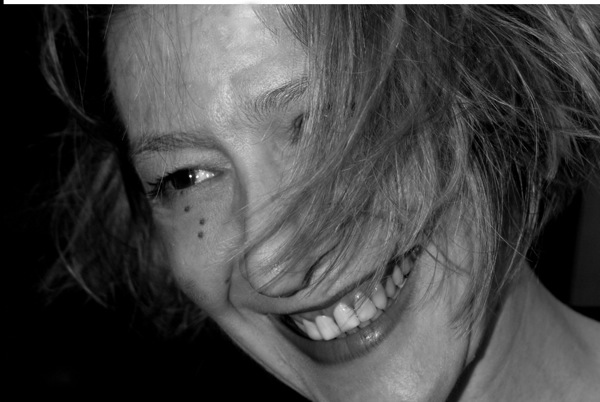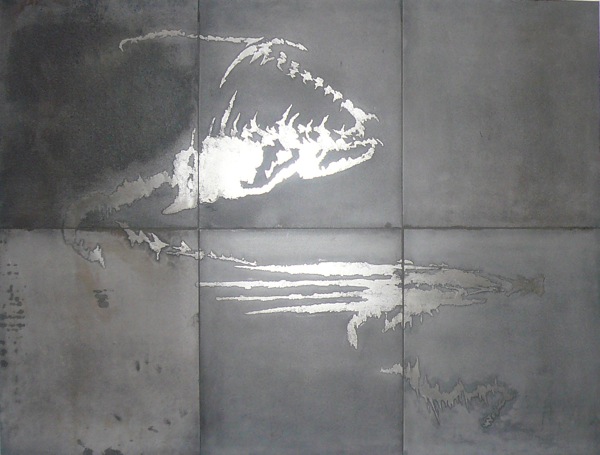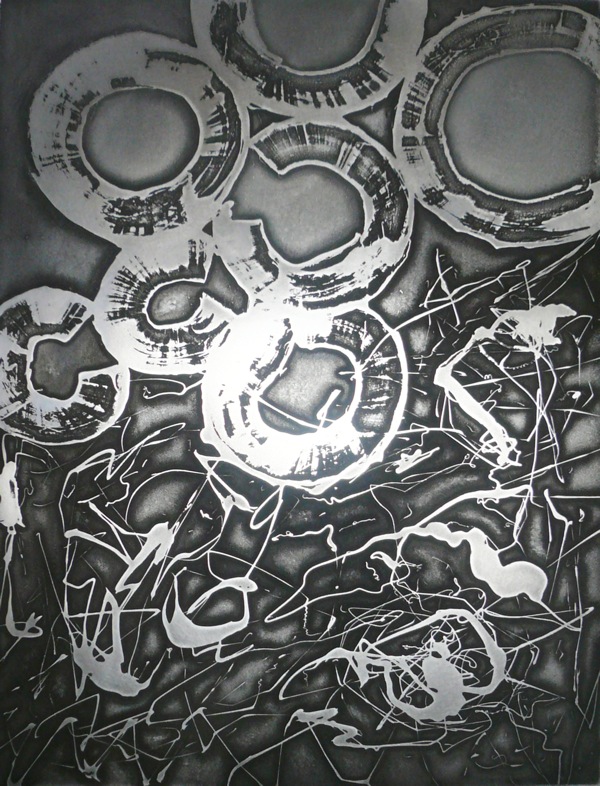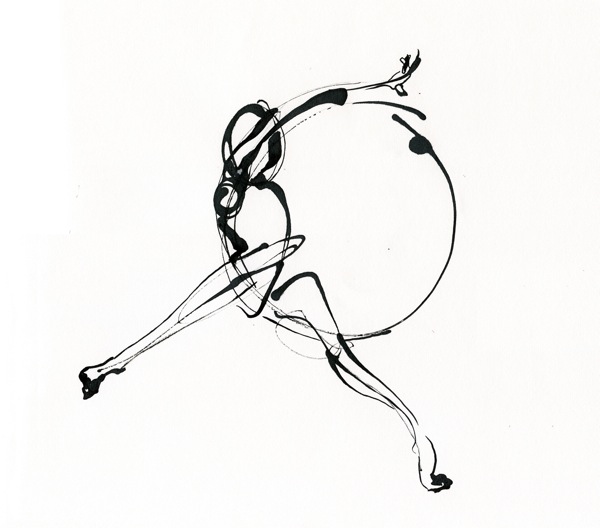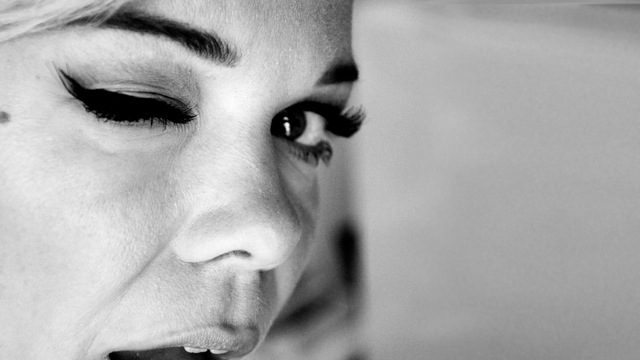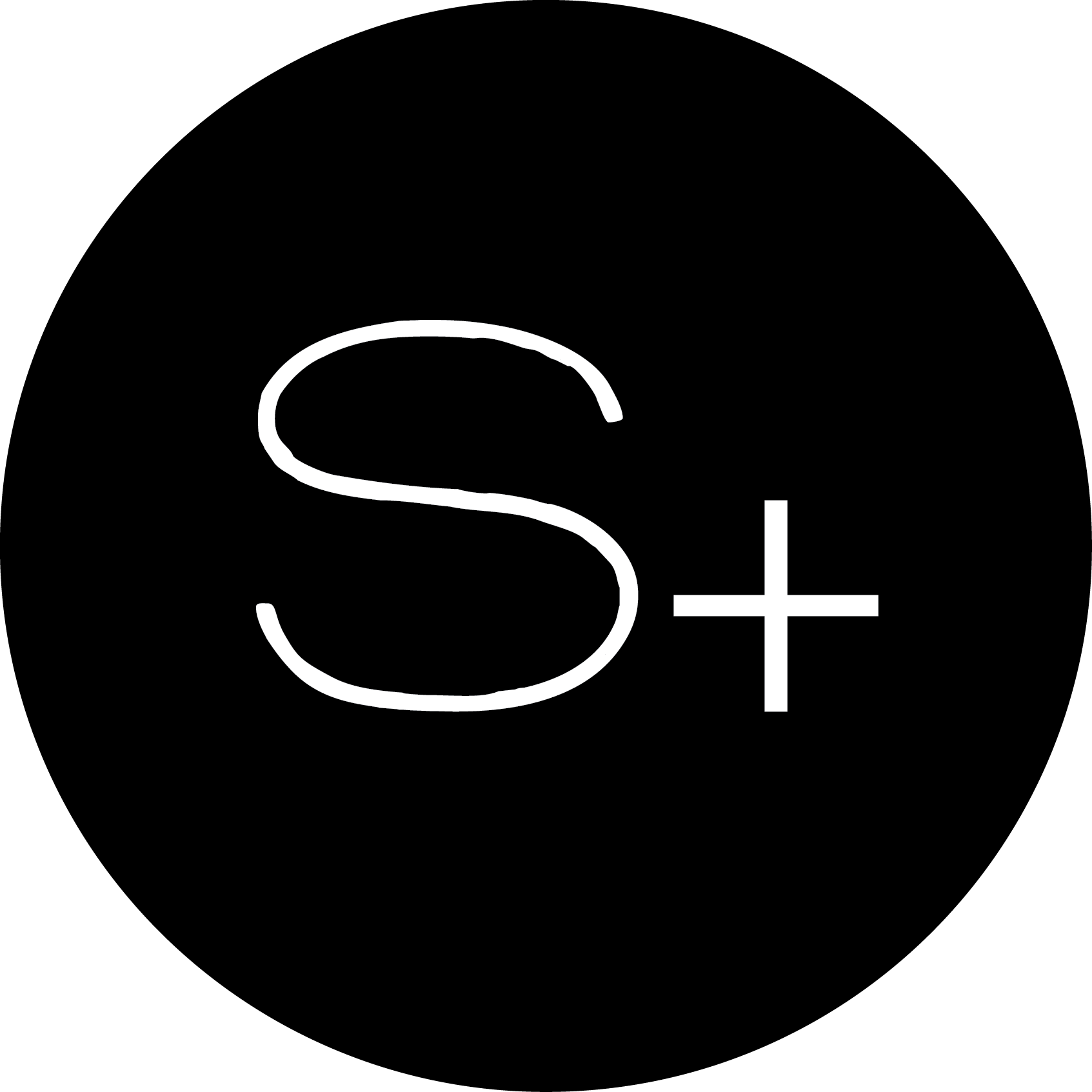INES DIARTE: Forging On
Inés Diarte was born in Paris in 1968 and currently divides her time between her hometown and Madrid. After a career in advertising as an account manager, she started designing furniture and quickly moved on to sculpture. She was selected by JCDecaux in 2003 to create and shape the trophy for the Spanish Outdoor Advertising Awards. In the last two years, she has exhibited her works in Baleares, Spain, France and Germany.
Interview by Melissa Unger
For many years, you enjoyed a successful career as an account manager in the advertising industry, but then you left it all behind to explore your own creativity; what was the trigger?
It just suddenly became the obvious choice. Something ineffable was telling me “you have to do it.” This change didn’t impose a big effort on my part, nor a painful questioning of my life. And I had no need to reject my past, i.e.- the job I was leaving. My decision was oriented towards the future, and creation as a path to follow, my path to follow. The change came from a positive desire. I simply went to the office and said “thank you very much, and goodbye.” I was 35, and suddenly all was clear.
How has this increase in creativity positively affected your life?
After enjoying collaborative work in ad agencies, my last job was to be “client”, which organizationally is usually much more pyramidal, and I’ve never been really into that, I mean it is not my character. Freedom that the creative life brings is not always that “easy to live”, but I feel much better with it than working in a pyramidal power system.
When you get out of a structure, you have to build your own structure, individual thinking and representation of life because you can’t “rely on” anymore; you’re putting yourself into risk. I like that. But it is not possible to stay lonely and alone, we are social animals and we need others… So the only way to go through that is to create new options and to clarify what is your own reality.
I like the words of Zao Wou-Ki “All what I paint is real for me.” I’m quite abstract too, but what I etch is real for me. I believe I became “more real” to myself making that choice.
It also allows me to talk with and approach people in another way. To find new connections with them, which are not only based on basic social codes. Art can be a “social meeting point” too, and quite a lot more human.
You began by creating furniture, before moving on to sculpture, tell us a bit about this evolution.
After having been an account manager, I suppose design was a first step towards creation. I love architecture and I started drawing tables, creating my own company. Then I discovered that it was a business with huge “barriers to entry” because of the high vertical integration level of the business model. So it was hard to go it alone from a capitalistic point of view. Moreover the reactions to my proposals were “we can’t manufacture the product” or “it is too sculptural” or “it is not the spirit of design today”. They were quite right … and the fact is that I was also sculpting and welding by that time, carving wood and lasering steel, so I was already more “art” than design… But I learnt a lot about materials building tables and talking with providers. Today I still have my prototypes, my place is full of tables! Maybe one day…
Another aspect is luck and friendship. One JCDecaux country manager suggested I enter a competition for a trophy. At first, I said “no thanks”… then I said “Ok… I’ll try”. I worked happily, with no pressure because I had no other pretention but to try and investigate. And I won the competition with a piece made of steel. I think that, coming from advertising, I was also able to think about the company values and make them “tangible” through a piece of art, it probably made the difference with other artists. After that, I was definitely in love with metal, and I started welding.
And yes… I just considered it was so wonderful to reinvent the world with my hands…it became an addiction, maybe my own therapy and probably my own way to feel free. I had found my material and my place.
You seem to be a bit of an Alchemist, you have a particular affinity for steel, you like working with the elements, acids and other chemicals, where does this passion stem from?
Steel is incredibly noble. Hard to work with, but noble. Steel first says “no I don’t want ”… but once it says “yes”, it’s trustworthy (even if as with any material, it evolves with time and temperature). Wood, for example, is more tricky. As an engraver, I sometimes work with copper and zinc. But I’ll always go back to steel.
You’re right talking about alchemy. Today, I work with acids and sometimes fire. It is just magic. Crazy reactions. Big bubbles. Danger and a process not always under control. I have always needed magic and transformation, in my life now, and as a child. I’m attracted to movement and believe in permanent progress.
Your steel engravings, though very powerful also have a very organic and poetic quality. What philosophical questions do you explore through your work?
Essence.
And I figuratively explore that concept by observing the relation between humanity and structure.
For example, in 2007, I worked a lot with the shape of “percebes”, which is an incredible little Spanish sea shell, absolutely amazing, prehistoric even. I transformed it into a kind of warrior in my etched pieces. I was using the structure of that strange animal to talk about the violence surrounding us.
I also spent hours in the Paleontological Gallery in the Jardin des Plantes in Paris, observing skeletons. The skeleton does not mean death for me, it means sense, essence, being.
Most of the time, my organic figures are enclosed in a geometrical structure. They are dynamic figures, alive, enclosed in rules or breaking them.
Then, I evolved. Today I’m working on the subject of “wine”. But my starting point is always the same, it is a question: What is the essence of wine? What is the structure of a vine? How does, literally speaking, inebriety manifest itself for me? How can I evoke a cellar with abstract signs? And again, organic forms as well as geometry appear to me and converse with each other.
Some artists stop their investigation when they can’t add more elements without deteriorating their subject / creation. It is quite typical of European art. In my case, I stop when I can’t quit anything anymore. When I’ve got the feeling I did my best to express the “whole concept” with the minimum signs.
Who is your favorite creative pioneer?
I respect nearly everything. People are all the time discovering new artists of the past because their creations speak to us today, even if those artists were nearly unknown, or unappreciated when they were alive… It the same for me; depending on what I’m looking for, I can be interested in somebody or somebody else.
From an intellectual point of view, and being half Spanish, I’ve got a huge respect for Picasso of course. Kandinsky, Duchamp, or Beuys, for the same reason: they were mainly innovators.
In private, I love Soulages for making black a true color that I made mine. Rothko because I dream with him.
Maybe the common point between the artists I like is they are mystical in general. And abstract. Spanish sculptors: Chillida, Oteyssa, Chirino, are others examples.
Their language is talking to me, I understand their world, their reality, and their works make me happy, they make me smile, as if they were my old brothers.
Tell us a secret…
Nothing to hide, all to share, including cooking recipes. Maybe if we were talking face to face, one to one, I would remember … Because I need you as a mirror to realize what is my secret. All is exchange and energy.
Published: November 12th, 2013


